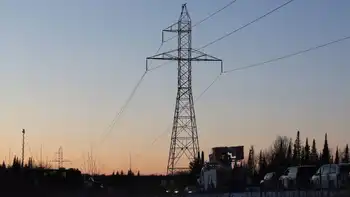More than a million in darkness from ice storms
By Associated Press
Substation Relay Protection Training
Our customized live online or in‑person group training can be delivered to your staff at your location.

- Live Online
- 12 hours Instructor-led
- Group Training Available
But with temperatures plunging, utility officials warned that it could be mid-February before electricity is restored to some of the hardest-hit places. The worst of the power failures were in Kentucky, Arkansas and Ohio.
Just getting to their source was difficult for utility crews. Ice-encrusted tree limbs and power lines blocked glazed roads, and cracking limbs pierced the air like popping gunfire as they snapped.
On January 28, President Barack Obama declared federal emergencies in Arkansas and Kentucky, clearing the way for the two states to receive federal aid.
In Kentucky, National Guard soldiers were dispatched to remove the debris. Oklahoma, already struggling to restore power there, planned to send crews to help in Arkansas later in the week.
"It looks like a tornado came through, but there wasn't a path; it was everywhere," said Mel Coleman, the chief executive officer of the North Arkansas Electric Cooperative in Salem. The power is out at his house, too, and he spent Tuesday night in a chair at his office.
The storm was "worse than we ever imagined," he said.
In Arkansas — where ice was 3 inches thick in some places — people huddled next to fireplaces, wood-burning stoves and portable heaters powered by generators. When it got too cold, they left for shelters or relatives' homes that weren't hit as badly.
"We bundled up together on a bed with four blankets. It's freezing," said Pearl Schmidt of Paintsville, in eastern Kentucky. Her family endured 32-degree weather before leaving their house for a shelter.
Kyle Brashears' family rode out the storm in their Mountain Home, Ark., home before fleeing to relatives after half an ice-caked oak tree fell into their home.
"It caved the roof in and ripped the gutter off, although it didn't penetrate inside," he said. "I was walking around outside until about 1 a.m. and it was just a nonstop medley of tree limbs cracking off."
The number of homes and businesses without power totaled around 1.3 million, in a swath of states from Oklahoma to West Virginia. Arkansas had more than 350,000 customers in the dark; Kentucky had about a half-million. The actual number of people affected the power failures could be much higher.
In Kentucky, the power outages produced by the ice storm were outdone only by the remnants of Hurricane Ike, which lashed the state with fierce winds last year, leaving about 600,000 customers without power. Gov. Steve Beshear said he was seeking a federal emergency disaster declaration, a key step in securing federal assitance for storm victims.
"We've got lots of counties that do not have any communication, any heat, any power," he said.
Various charities opened shelters across the region, but with the power out nearly everywhere — including at some radio stations — it was difficult to spread the word. Some deputies went door to door and offered to drive the elderly to safety.
Meanwhile, some community leaders buckled down for a long haul. Kentucky Public Protection Cabinet spokesman Dick Brown urged people to conserve water because power failures could limit supplies in some areas.
Since the storm began building Monday, the weather has been blamed for at least six deaths in Texas, four in Arkansas, three in Virginia, six in Missouri, two in Oklahoma, and one each in Indiana and Ohio. Some parts of New England were expected to see well over a foot of snow as the storm kept moving northeast, but because it turned to snow, ice-related power failures weren't as big of a concern.
That didn't mean a trouble-free day for commuters. Delays or cancellations were reported at airports including those serving Columbus, Cincinnati, Philadelphia, New York and Boston. Commuters on highways encountered a slushy mess.
Tracey Ramey of Waynesville, Ohio, a village about 20 miles southeast of Dayton, said her husband left for his job as a plow operator late January 26 with an overnight bag and hasn't been able to return. He did call her the morning of January 28 to caution her not to go to her data-entry job.
"He said, 'There's 2 inches of ice on the road and there's no way you're going to make it to work,'" she said.











